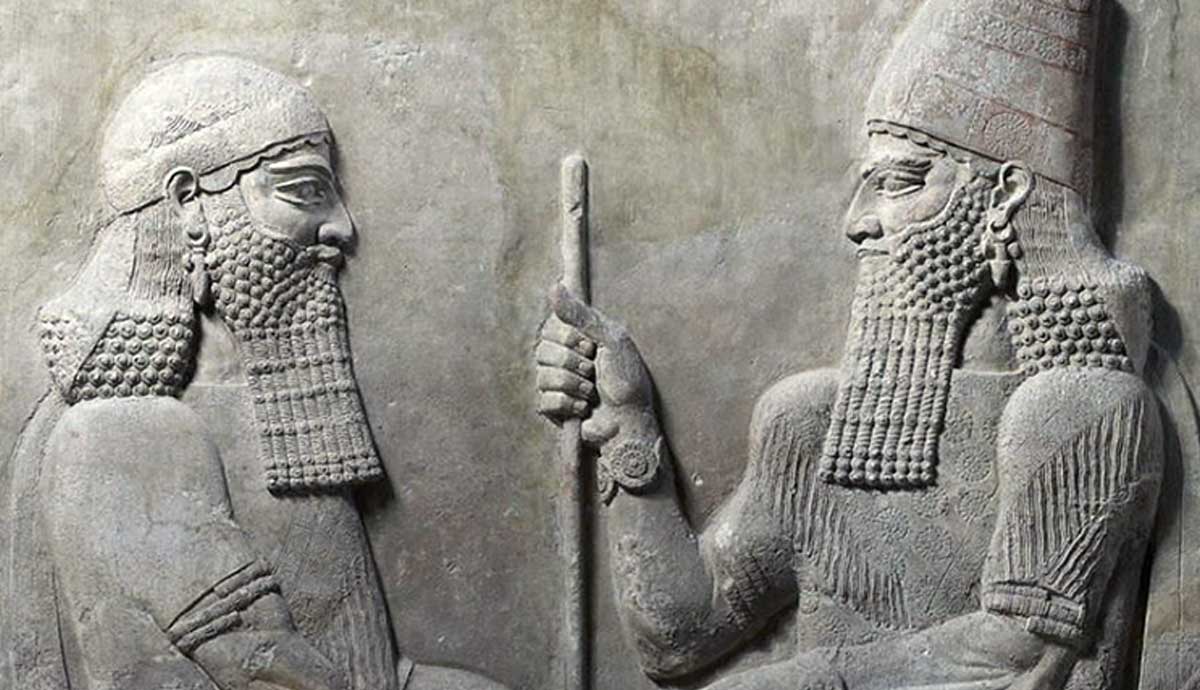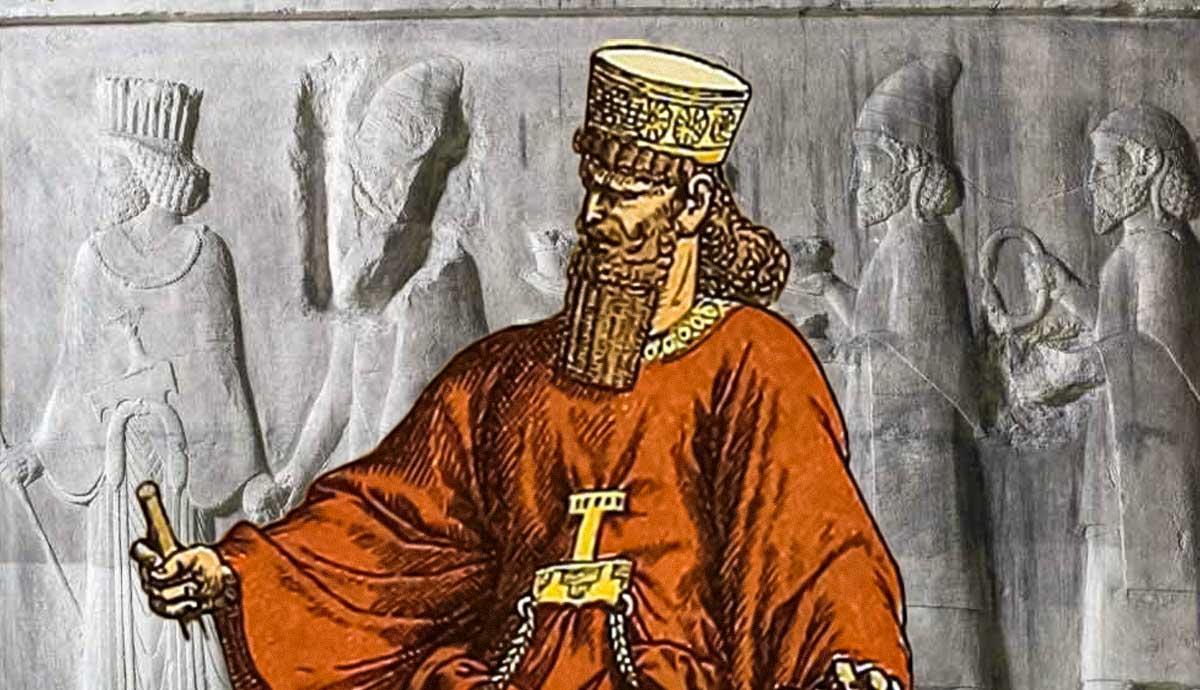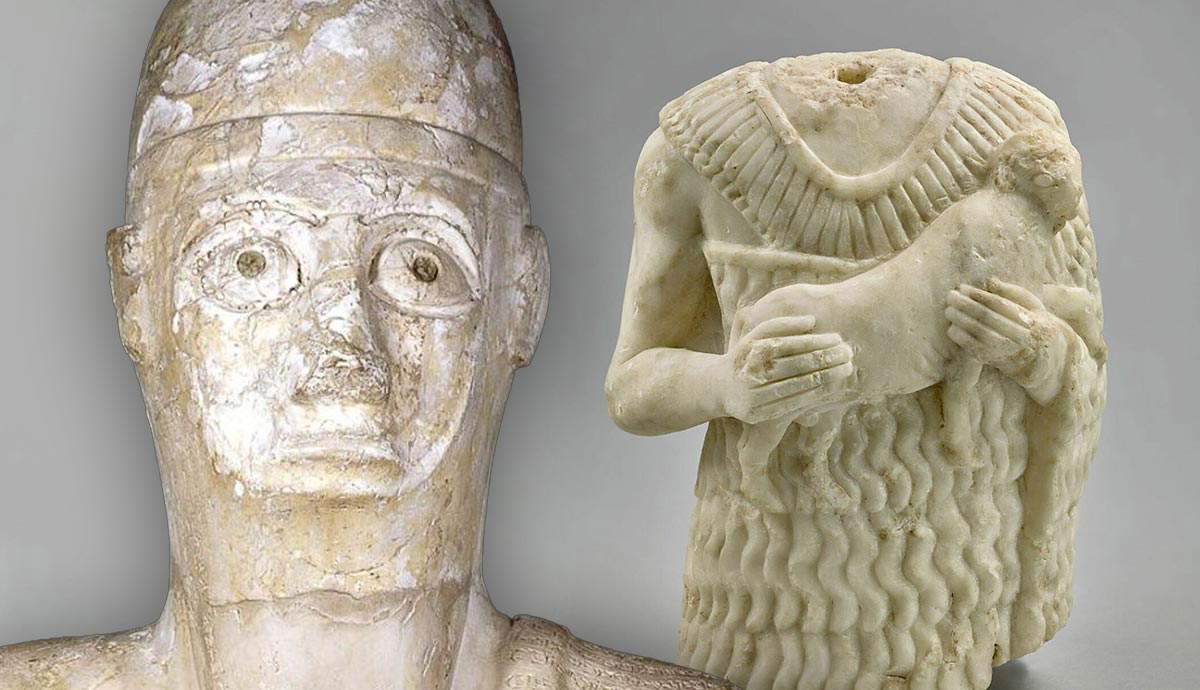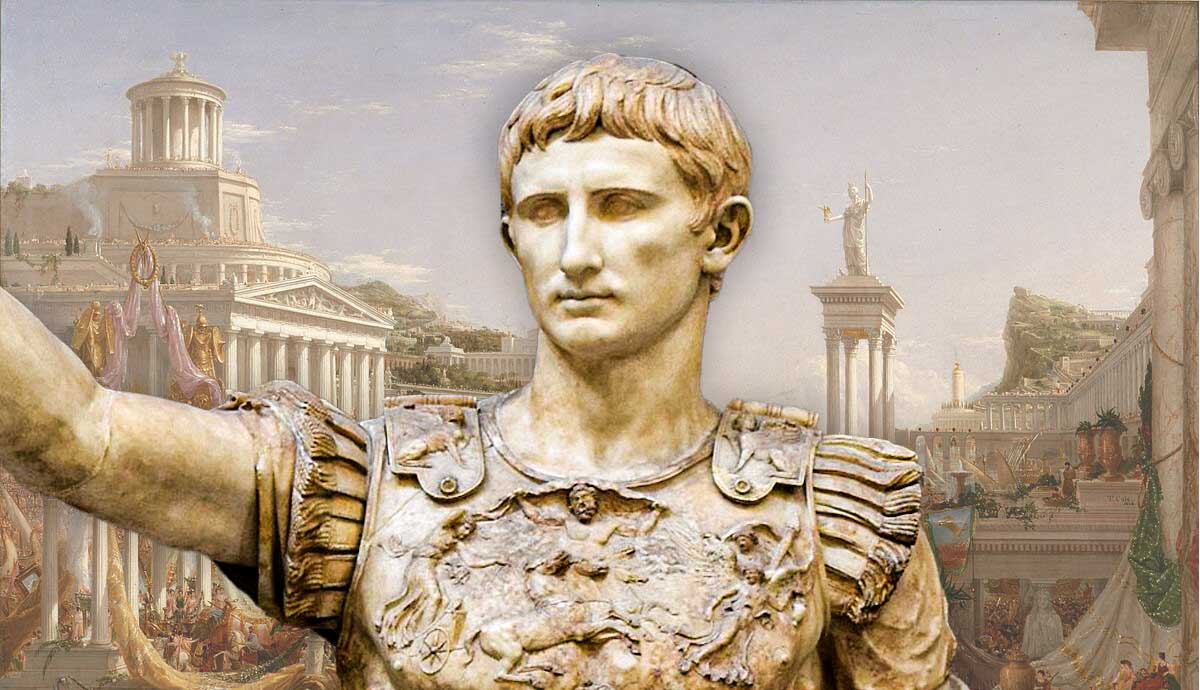
Sargon of Akkad (ruled c. 2334-2279 BCE) and Sargon II of Assyria (ruled 721-705 BCE) were two of the greatest rulers in ancient Near Eastern history. Despite sharing the same name, the two men were from different dynasties and lived more than 1,500 years and hundreds of miles apart. With that said, both kings left an indelible mark on the ancient world through numerous military campaigns, ambitious building projects, and efforts that changed Near Eastern culture. When several kings in the same culture have the same name, it is historical tradition to name the one with the greatest accomplishments “the Great.” Sargon of Akkad is sometimes referred to as “the Great,” but a compelling case can be made for Sargon of Assyria’s greatness.
They Were Young Men Destined to Rule

Although the primary source documents about the early lives of both Sargons are scant, there is enough to piece together a general outline. An Akkadian language text mentions Sargon of Akkad’s birthplace as along the Euphrates River near the important city of Kish. Perhaps the most interesting detail of the text states: “My mother was a high priestess, my father I knew not.” Definitely an inauspicious beginning for a man who would later rule most of Mesopotamia. Sargon’s less than noble origins is also probably why he took the name that he did, which means “the legitimate king.” The obvious question then is, how did this man from a questionable background become king of an empire? The answer to that question can be found in another Akkadian cuneiform text dated to the time of Sargon.

According to the text, Sargon overthrew King Lugalzagesi (ruled c. late 2300s BCE) of the Uruk Dynasty. At the time, Mesopotamia consisted of several city-states, with most of the political power and cultural influence centered in the Sumerian dominated south. The background of the battle is not related in the text, only the aftermath.
“Sargon, king of Agade, overseer of Ishtar, king of Kish, anointed priest of Anu, king of the country, great ensi of Enlil; he defeated Uruk and tore down its wall; in the battle with the inhabitants of Uruk he was victorious. Lugalzaggisi, king of Uruk, he captured in (this) battle, he brought him in a (dog) collar to the gate of Enlil. Sargon, king of Agade, was victorious in the battle with the inhabitants of Ur, the(ir) town he defeated and tore down its wall.”
How Sargon became the commander of what was likely a large and well-trained and equipped army remains a mystery. The Sumerian King List adds few details, so one must assume that Sargon was quite charismatic, intelligent, and could also probably handle weapons quite well. Sargon of Akkad likely learned his knowledge of ancient warfare hands-on in the military. The victory gave Sargon dominion over southern Mesopotamian and allowed him to start a new political dynasty.

Unlike Sargon of Akkad, Sargon II of Assyria was born into royalty. Sargon of Assyria was actually the second Assyrian king named Sargon. The first Sargon ruled in the late third millennium BCE, and little is known about him. Therefore, Sargon II will be referred to here as “Sargon of Assyria” as he was the greater of the two Assyrian Sargons and to differentiate him from Sargon of Akkad. Sargon of Assyria was one of the sons of King Tiglath-Pileser III (ruled 744-727 BCE), and based on what is known about the family, he was probably born in the royal palace in Kalhu/Nimrud. Modern historians believe that Sargon usurped the royal throne from his brother, Shalmaneser V (ruled 726-722 BC), and started a new dynasty, although the details are unclear.
The two Sargons may have had very different backgrounds, but they both came to the throne violently, one through a coup and the other by military conquest. Once each man settled into his new role as king, he also embarked on impressive building projects to legitimize his rule.
They Built Cities

Perhaps one of the more unique aspects that both Sargons shared was their construction of entirely new capital cities. There are a number of reasons why the Sargons built these new cities, with the most important and obvious being to legitimize their rules. Because Sargon of Akkad was not of the royalty and Sargon of Assyria was a usurper, a large construction project was vital. The construction of the new project would placate the gods and keep the people busy, not thinking of how their new king came to power.
Sargon of Akkad’s new city was named Akkad, sometimes written as “Agade.” Modern archaeologists have not yet located Akkad, but it is believed to have been on the Euphrates River, near Sargon’s hometown of Kish. Not to be outdone by his namesake, Sargon of Assyria also built a new city.

Located north of the Assyrian city of Nineveh, high on a citadel, Sargon of Assyria built his new capital city, Dur-Sharrukin/Khorsabad, in 717 BCE. The name of the city is translated into English as “fortress of Sargon,” and archaeological work at the site has revealed how impressive it was. The city was surrounded by a nearly four-and-a-half-mile wall and encompassed 740 acres of space. Curiously, Dur Sharrukin was not located on the Tigris River as all of the other major Assyrian cities were.
Until Akkad is located and excavated it is impossible to determine which city was the greatest. One interesting thing that both cities had in common, though, was that they were promptly abandoned by the Sargons’ successors.
They Fought Wars and Ruled People

Sargon of Akkad unified central and southern Mesopotamia under his rule through warfare. He pushed against the conventions of the era by building a standing army and a large personal guard of 5,400 men. It is believed that Sargon made the big military push late in his reign, when he had made alliances throughout Mesopotamia and had trained his army. The same historical text cited above that related Sargon’s rise to power also details part of his conquest of Mesopotamia.
“Sargon, king of Kish, was victorious in 34 campaigns and dismantled (all) the cities, as far as the shore of the sea… Enlil did not let anybody oppose Sargon.”
In order to control such a large standing army, Sargon needed to revamp Mesopotamia’s bureaucratic culture. Instead of eliminating the kings of the numerous city-states, Sargon made the kings regional governors. Although the government was unified under the rule of one king, the nature of the system prevented competing dynasties from forming. The regional governors had more land that they theoretically ruled, but they were less tied to their former cities, which was where power emanated from in ancient Mesopotamia.

Sargon of Assyria’s reign was also marked by several successful military campaigns. As an Assyrian, Sargon was expected to live up to the martial deeds of his father and other illustrious ancestors, and warfare also had a religious component for the Assyrians. Sargon also had to keep his critics and potential usurpers at bay, so he personally led major military campaigns in every year of his rule. The Assyrian king defeated the state of Uratu and then went north to Cilicia and south to the border of Egypt. He then retook the important city of Babylon after ten years of Elamite interference. Several texts discovered in the ruins of Dur-Sharrukin detail how Sargon dealt with his enemies.
“The people and their possessions I carried off. Those cities I destroyed, I devastated, I burned with fire. [The people] of the cities of Sukka, Bala and Abitikna, conceived a wicked plan of tearing up the roots of (their) land and with Ursâ, of Urarut (Armenia), they came to terms. Because of the sin which they had committed, I tore them away from their homes and settled them in Hatti of Amurru.”

Sargon of Assyria’s most notable military campaign was against the Kingdom of Israel in 722 BCE, as related in 2 Kings 18:9-11 of the Old Testament. The siege and destruction of Israel’s capital city of Samaria is also related in Assyrian texts. The Old Testament states that Shalmaneser led the siege, but many modern historians believe that Sargon finished the job after assassinating his brother.
Like his much earlier namesake, Sargon of Assyria also overhauled the Assyrian state. When Sargon came to power, 25 provinces were ruled by semi-autonomous governors. Their power varied widely, with some of the governors being quite powerful and a potential threat to Sargon. So, to counter the potential of recalcitrant governors, Sargon reduced the number of provinces to just 12. The restructuring was successful because Sargon died, as most Assyrian kings would have wanted, on the battlefield and not at an assassin’s hands.
Sargon of Akkad and Sargon of Assyria: Two Culture Warriors

It is arguable that Sargon of Akkad’s greatest legacy was the influence he had on ancient Mesopotamian culture. His very name was revered for centuries, as demonstrated by two Assyrian kings taking it, but his greatest impact was on the language of the region. Before Sargon, the Sumerian language was the dominant written and spoken language in Mesopotamia. After Sargon came to power, the Akkadian language began to be written in the cuneiform script, which was originally used for the Sumerian language. The Semitic Akkadian language quickly overtook Sumerian as the lingua franca of Mesopotamia and all later major dynasties used it. The 1st dynasty of Babylon, the Kassites, the Assyrians, and the Neo-Babylonians all wrote their texts exclusively in Akkadian cuneiform, although some native languages were probably still spoken. Even the Hittites, who were based in Anatolia and spoke an Indo-European language, wrote Hittite-Akkadian bilingual texts. Akkadian became so widely spoken and written that by the Late Bronze Age (c. 1550-1200 BC), Akkadian was the lingua franca of the entire Near East.
Akkadian was the default diplomatic language used in the letters of correspondence between kings of the Great Powers: Egypt, Hatti, Babylon, Assyria, Mitanni, and Alashiya. A cache of more than 300 of these letters were discovered in the Egyptian village of Amarna in 1887. In addition to the Amarna cache, Akkadian literature was discovered in other cities outside of Mesopotamia, including Hattusa, Ugarit, and Megiddo.

Sargon of Assyria also had an impact on the culture of the Near East, but it was not as apparent. Although, as noted earlier, Sargon was not mentioned as the Assyrian king who destroyed the Kingdom of Israel, he is mentioned in Isaiah 20:1. As modern Biblical historians have corroborated the fall of Samaria/Israel with Assyrian texts, Sargon’s role in one of the most important events in the Bible has come into focus. The result is that Sargon of Assyria has become famous, or infamous, in the eyes of millions of Christians around the world.
It is difficult to compare any two leaders in order to gauge which one is “greater,” especially when they lived in the ancient world. When comparing Sargon of Akkad and Sargon of Assyria, it is clear they were both great in their own right. Both Sargons were warrior kings, with Sargon of Assyria even dying in battle. The two Sargons also initiated government reforms and built new cities, which were later abandoned. One could argue that Sargon of Akkad had a greater impact on the culture of the ancient Near East. Yet Sargon of Assyria’s name may be better known to modern people through his impact on Biblical history. Ultimately, both Sargons were impactful leaders who could be named “the great,” so it is your choice to decide which one is the greatest.








